Definitions of Child Abuse and Neglect

There are numerous federal and state laws that define child abuse and neglect. In determining whether or not a specific action violates civil or criminal law, it is necessary to consult with local authorities. The following general definitions of child abuse and neglect are taken from the World Health Organization and the International Society on Child Abuse and Neglect. In reviewing these definitions, Christians should keep in mind that God’s standards are much higher than earthly standards. In God’s eyes, for example, even lustful or hateful thoughts about a child constitute abuse in direct violation of God’s commandments (Matthew 5:21-22; 27-30).
Physical Abuse
Physical abuse of a child is defined as the intentional use of physical force against a child that results in – or has a high likelihood of resulting in – harm for the child’s health, survival, development or dignity. This includes hitting, beating, kicking, shaking, biting, strangling, scalding, burning, poisoning and suffocating. Much physical violence against children in the home is inflicted with the object of punishing.
Sexual Abuse
Sexual abuse is defined as the involvement of a child in sexual activity that he or she does not fully comprehend, is unable to give informed consent to, or for which the child is not developmentally prepared, or else that violates the laws of society.Children can be sexually abused by both adults and other children who are – by virtue of their age or stage of development – in a position of responsibility, trust or power over the victim.
Emotional and Psychological Abuse
Emotional and psychological abuse involves both isolated incidents, as well as a pattern of failure over time on the part of a parent or caregiver to provide a developmentally appropriate and supportive environment. Acts in this category may have a high probability of damaging the child’s physical or mental health, or its physical, mental, spiritual, moral or social development. Abuse of this type includes: the restriction of movement; patterns of belittling, blaming, threatening, frightening, discriminating against or ridiculing; and other non-physical forms of rejection or hostile treatment.
Neglect
Neglect includes both isolated incidents, as well as a pattern of failure over time on the part of a parent or other family member
to provide for the development and well-being of the child – where the parent is in a position to do so – in one or more of the following areas:
- Health
- Education
- Emotional development
- Nutrition
- Shelter and safe living conditions.
Source: Preventing Child Maltreatment: A Guide to Taking Action and Generating Evidence



